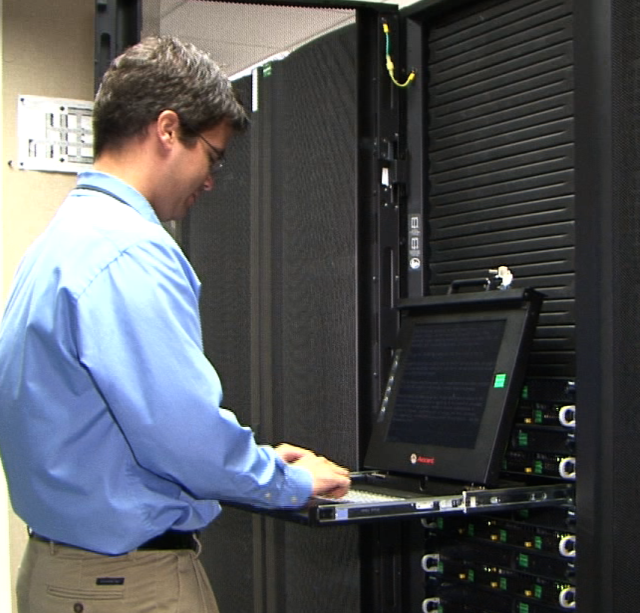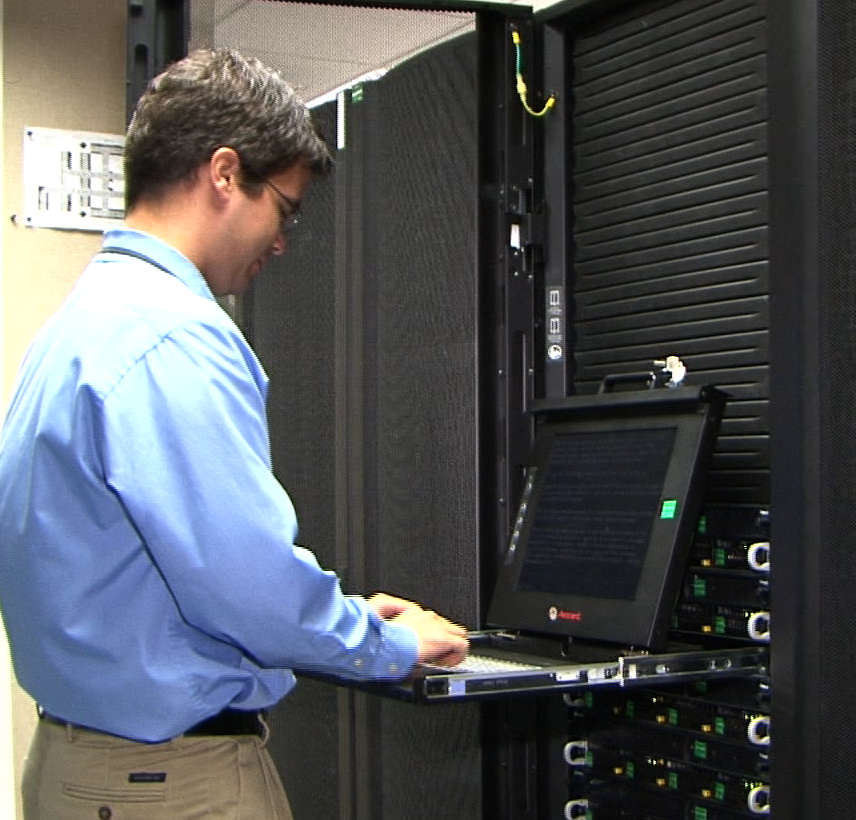Army Research Laboratory computer scientists and engineers turned to children's gaming technology to advance military applications intended for the combat zone.
By combining traditional computer processing units or just about any desktop system one might find in a military computer organization, with graphics processing units, or specialized processors with functions that elevate gaming platforms like X-Box, Playstation and Wii to pictorial coolness, the Army can perform floating point arithmetic at exponentially faster rates. This can improve and even expand fielded applications for Soldiers.
Floating point arithmetic is everywhere in computer processing; nearly all scientific computing applications and computer languages have floating-point requirements and instructions. That simply means they can recognize algorithms for calculation or data processing, for example, written with integers, and real numbers written with decimal points or floating points.
"ARL is targeting GPUs for tactical high-performance computing," said Dale Shires, team leader, Computational Science and Engineering Branch within ARL's Computational and Information Sciences Directorate.
"For years, we've done high performance computing back at the supercomputing centers where there are large scale air-conditioning systems and the like to provide the infrastructure for the computing needs. GPUs are little different in that you can take one GPU and put it into the field and get performance you could never get before inside even a supercomputing center," Shires said. "So in that way, you can actually field the technology from everything from a single GPU to do something like radar processing to a cluster of GPUs in like a workstation environment to do more involved signal intelligence processing."
While traditional supercomputing centers will always serve a purpose in large-scale military modeling and simulation, this new research on GPU processing is moving real-time performance and new applications closer to the Army warfighter.
ARL is building a system that will include about seven GPUs that can be placed in a standard workstation-sized framework, Shires said.
The laboratory is about six months away from realizing the goal of putting close to 20 teraflops -- or 20 trillion floating point operations per second -- of performance on it. This can be easily projected into the field, such as a company intelligence cell or center, to do intelligence processing and signal processing where it is closer to the Soldier and closer to the action, he said.
As the hardware continues to evolve with thousands of GPU streaming processors per core, exceeding 20 teraflops in this small footprint should easily be possible with some creative engineering. The benefits of GPUs, he noted, are they are commodity-based so they're not that expensive, they give good performance, and they're highly flexible since they are programmed using software just like traditional CPUs.
"GPU is actually co-processor technology that simply plugs into a computer chassis, but its sole purpose is to handle rendering to a computer screen. This helps a lot in high-performance computing graphics rendering. So people who do online gaming, role playing games, first-person shooter games -- any of those things you have to draw a screen as fast as you can and update it as fast as you can -- you would use something like a GPU," Shires said.
GPUs scale across the entire spectrum of the problems ARL is researching, and they optimize a number of computational activities, among them, for example, high-performance computing simulations that might compute the airflow over a wing or a helicopter blade, he added. Binary computing is pervasive across the Army requirement space, and the expertise developed by his team in algorithm design and optimization for the technology is opening up possibilities in several computational areas where real-time processing requirements or minimizing time-to-solution is critical.
ARL is leading the way in the Army and Department of Defense in investigating this new level of performance possible by intelligently incorporating hybrid computing technology with a warfighter focus.
Shires' team participated in several technology panels with leading industry and academic investigators to discuss the successful integration of the technology into basic and applied research efforts.
Some of these panels have included the "Views from Government Agencies on Multicore Computing and Challenges" at the 2nd Workshop on Frontiers of Multicore Computing; "Technical Directions, Issues, and Success Stories with Alternative Processors, Heterogeneous Multi-cores and GPGPU Computing in HPC" at the 37th HPC User Forum; and "Current and Future Applications within DoD using GPUs, FPGAs, and Cell Processors for HPC" at the DoD HPC User's Group Conference.
A paper on the groups' success in fielding a radar processing application is due out soon in an issue of the IEEE Transactions on Parallel and Distributed Systems journal. Also, Shires' group has been at the forefront of investigating this technology in the realm of the DoD High Performance Computing Modernization Program.
The team wrote several publications dealing with GPU-accelerated computing for the "HPC Insights" publication newsletter for this program and has participated in several events sponsored by the DoD HPCMP seeking to better understand how this technology might be integrated into the program's acquisitions.


Social Sharing